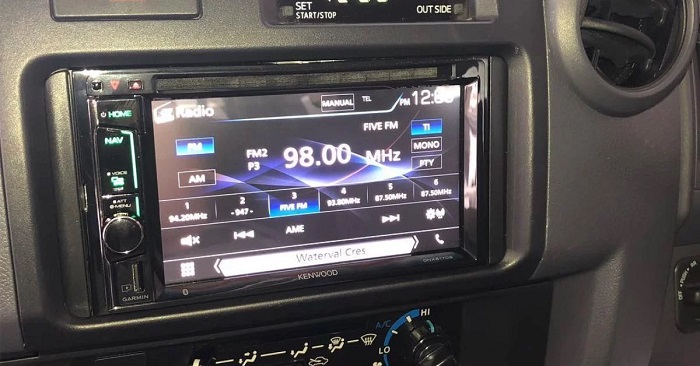Upgrading your car’s factory radio is one of the most effective ways to modernize your vehicle. Many older cars come with basic head units that lack features such as Apple CarPlay, Android Auto, built-in navigation, and reverse camera integration. By replacing your stock radio with an aftermarket unit, you can significantly enhance both the entertainment and functionality of your car. In this guide, we’ll cover everything you need to know about replacing your factory radio, integrating essential modern features, and restoring steering wheel controls using Connects2 adapters.
Why Upgrade Your Factory Radio?
Factory radios, especially in older vehicles, are limited in terms of connectivity and functionality. They may not support features like Bluetooth, smartphone integration, GPS navigation, or even DAB radio. By upgrading to an aftermarket head unit, you’ll be able to access:
- Apple CarPlay and Android Auto: Seamless smartphone integration allows you to access apps like Google Maps, Spotify, and messaging services directly from your car’s display.
- Navigation Systems: Modern aftermarket radios come equipped with built-in GPS or offer compatibility with navigation apps through Apple CarPlay and Android Auto.
- Reversing Camera Integration: Installing a reverse camera improves parking safety, and many modern head units support camera input.
- DAB Radio: Enjoy clearer sound and more radio channels with a DAB antenna, which offers better reception and a wider range of stations compared to traditional FM radios.
Step-by-Step Guide to Replacing Your Factory Radio
Step 1: Choose the Right Head Unit
Before starting the installation process, you need to select a head unit that fits your car’s dashboard and offers the features you need. Aftermarket radios come in two standard sizes:
- 1 DIN: These are the standard, single-height radios commonly found in older cars. They offer basic controls but can also come with flip-out screens for modern features like navigation or CarPlay.
- 2 DIN (Double DIN): These radios have a larger, double-height form factor and are typically found in newer vehicles. They offer more space for touchscreens and advanced features like navigation, smartphone integration, and camera input.
Make sure the head unit you choose is compatible with your vehicle. To install a new radio, you’ll likely need a 1 DIN or Double DIN fascia plate, which adapts the radio to fit neatly into your dashboard.
Step 2: Gather Necessary Installation Components
Installing a new radio requires several components beyond just the head unit itself. These components ensure that the installation is smooth, functional, and compatible with your car’s existing wiring:
- Fascia Plate: This piece ensures that your new radio fits seamlessly into your car’s dashboard, whether it’s a 1 DIN or Double DIN installation.
- Wiring Harness: You’ll need a wiring adapter to connect the new radio to your car’s electrical system without cutting the factory wiring.
- Antenna Adapter: For vehicles with unique antenna connectors, an adapter will be necessary to maintain proper radio reception.
- DAB Antenna: If you’re upgrading to a head unit with DAB (Digital Audio Broadcasting) radio, a DAB antenna is essential for receiving a clearer and wider selection of radio stations.
- Connects2 Steering Wheel Control Adapter: If your car has steering wheel controls for audio, the Connects2 adapter allows you to retain these functions with the new radio.
You can find all the essential components you need for your radio upgrade at Autoradio Adapter, where you can browse a variety of adapters to ensure compatibility between your new radio and vehicle. Additionally, if you’re looking for complete installation kits tailored to your car’s specific requirements, explore the range of high-quality products available at Autoradio Einbauset. For specific wiring and connection needs, make sure to check out the selection of cables and harnesses at Autoradio Anschlusskabel, ensuring a seamless and professional installation.
Step 3: Remove the Factory Radio
Before starting the removal, disconnect the car battery to prevent any electrical issues. Here’s a general overview of how to remove the factory radio:
- Pry Off the Trim: Use a plastic trim removal tool to carefully pry off the dashboard trim surrounding the radio. This will expose the screws holding the radio in place.
- Remove the Screws: Unscrew the screws securing the factory radio to the dashboard.
- Pull Out the Radio: Gently pull the radio out, but don’t yank it too hard as the wiring will still be connected to the back.
- Disconnect the Wiring and Antenna: Carefully unplug the wiring harness and antenna cable from the back of the radio.
Step 4: Install the New Head Unit
With the factory radio removed, you can now begin installing your new aftermarket radio:
- Fit the Fascia Plate: Depending on the size of your new radio, fit either a 1 DIN or 2 DIN fascia plate into the dashboard to ensure a clean and professional finish.
- Connect the Wiring Adapter: Plug the wiring harness adapter into the car’s factory wiring. This ensures that all necessary connections (power, speakers, etc.) are compatible with the new head unit.
- Attach the Antenna Adapter: If needed, connect the antenna adapter to the radio’s antenna input.
- DAB Antenna Installation: If your new head unit supports DAB radio, install the DAB antenna. Many antennas are designed to be mounted on the windscreen or dashboard.
- Connect Steering Wheel Control Adapter: If your car has steering wheel controls, use the Connects2 adapter to maintain functionality with your new radio.
Step 5: Integrate Navigation and Reverse Camera (if applicable)
Many modern head units come with built-in GPS or the ability to connect to a reversing camera. Follow these steps to complete the installation:
- Connect the GPS Antenna: If your head unit has built-in navigation, you’ll need to install the GPS antenna. Place the antenna in a location with good reception, such as on the dashboard or near a window.
- Install the Reverse Camera: If you’re adding a reverse camera, run the video cable from the camera at the back of the car to the head unit’s camera input. Once installed, the camera will activate automatically when the car is put in reverse.
Step 6: Test the New Radio
After the installation is complete, reconnect the car battery and power on the new radio. Test all of the features to ensure everything is functioning correctly:
- Sound Quality: Make sure the speakers are working properly, and there’s no distortion or interference.
- Apple CarPlay/Android Auto: Connect your smartphone to the head unit and test CarPlay or Android Auto for smooth integration.
- Navigation: If you installed a GPS antenna, test the navigation feature to ensure it’s receiving a strong signal.
- Reverse Camera: Test the reverse camera by putting the car in reverse and checking the screen for a clear view.
- Steering Wheel Controls: If you installed a steering wheel control adapter, test the buttons to ensure they are working with the new head unit.
Step 7: Final Adjustments and Reassembly
Once you’ve tested everything, carefully reassemble the dashboard by securing the trim back into place. Make any necessary adjustments to the sound settings, navigation, or camera angle to optimize your experience.
Conclusion: The Benefits of a Fully Integrated Car System
Upgrading your factory radio not only enhances your car’s entertainment options but also adds critical functionality like smartphone integration, navigation, and reverse camera capabilities. With the right components, you can ensure a smooth installation and enjoy a modern, connected driving experience.
For all the parts and tools you need for your radio replacement, visit autoradio-adapter.eu.










